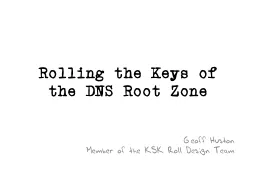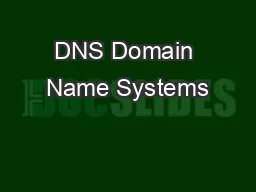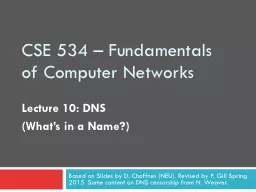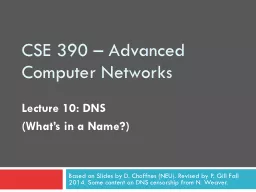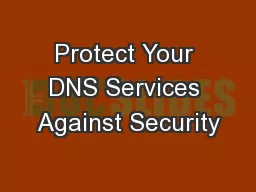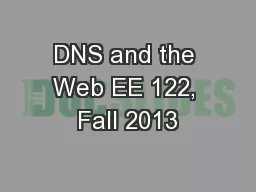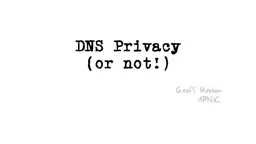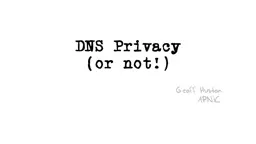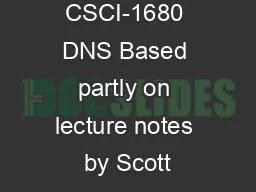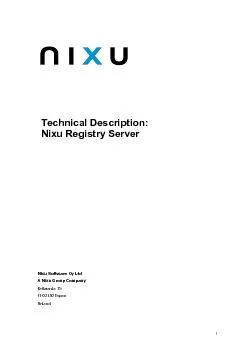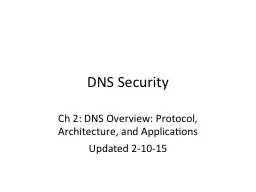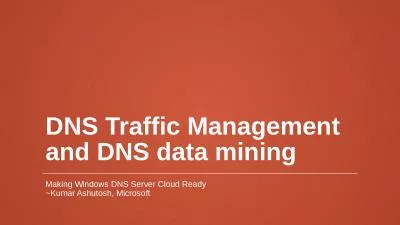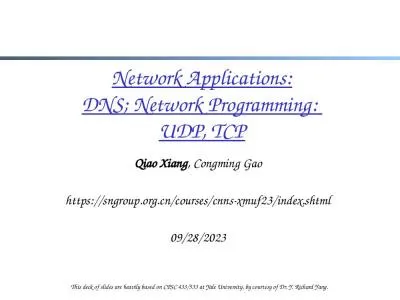PPT-Rolling the Keys of the DNS Root Zone
Author : karlyn-bohler | Published Date : 2018-02-24
Geoff Huston Member of the KSK Roll Design Team Five Years Ago The Eastern KSK Repository The Western KSK Repository El Segundo California No that s not really
Presentation Embed Code
Download Presentation
Download Presentation The PPT/PDF document "Rolling the Keys of the DNS Root Zone" is the property of its rightful owner. Permission is granted to download and print the materials on this website for personal, non-commercial use only, and to display it on your personal computer provided you do not modify the materials and that you retain all copyright notices contained in the materials. By downloading content from our website, you accept the terms of this agreement.
Rolling the Keys of the DNS Root Zone: Transcript
Download Rules Of Document
"Rolling the Keys of the DNS Root Zone"The content belongs to its owner. You may download and print it for personal use, without modification, and keep all copyright notices. By downloading, you agree to these terms.
Related Documents

